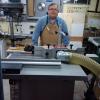Would this interest you?
eBay item# 301683535982
Last edited by Bruce Page; 01-28-2016 at 12:40 PM.
Reason: Removed eBay link per the TOS.
Thoughts entering one's mind need not exit one's mouth!
As I age my memory fades .... and that's a load off my mind!
"We Live In The Land Of The Free, Only Because Of The Brave"
“The problems we face today are there because the people who work for a living are outnumbered by those who vote for a living."
"Socialism is a philosophy of failure, the creed of ignorance, and the gospel of envy, its inherent virtue is the equal sharing of misery." Winston Churchill




 Reply With Quote
Reply With Quote





